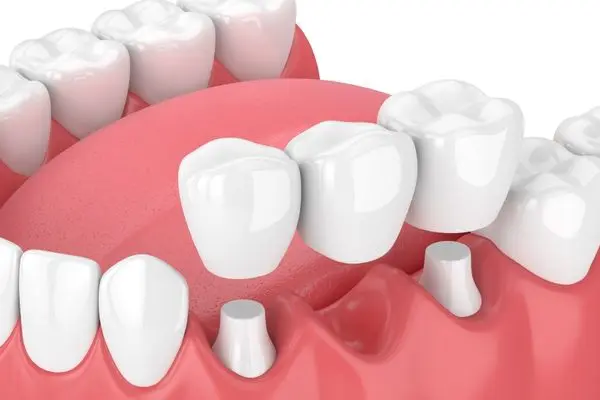A dental bridge is a popular restorative dental procedure used to replace one or more missing teeth. It consists of a false tooth or teeth that are anchored to adjacent teeth using dental crowns. The result is a natural-looking, functional, and permanent solution to tooth loss.
If you are considering getting a dental bridge, it is important to understand what the procedure involves, the different types of bridges available, and the benefits and drawbacks of each. In this article, we will provide you with a comprehensive guide to dental bridges, including everything you need to know before undergoing this procedure.

Types of Dental Bridges
There are four main types of dental bridges: traditional, cantilever, Maryland, and implant-supported. Each has its own set of benefits and drawbacks, and the type that is best for you will depend on your specific dental needs and preferences.
- Traditional Dental Bridge
A traditional dental bridge consists of a false tooth or teeth that are supported by dental crowns placed on the teeth on either side of the gap. This is the most common type of dental bridge and is often used to replace one or two missing teeth.
- Cantilever Dental Bridge
A cantilever dental bridge is similar to a traditional bridge, but it only requires one dental crown to anchor the false tooth or teeth. This type of bridge is typically used when there is only one tooth adjacent to the gap.
- Maryland Dental Bridge
A Maryland dental bridge, also known as a resin-bonded bridge, is a less invasive alternative to traditional bridges. It uses metal or porcelain wings bonded to the back of adjacent teeth to hold the false tooth or teeth in place. This type of bridge is ideal for replacing missing front teeth.
- Implant-Supported Dental Bridge
An implant-supported dental bridge is a permanent solution that uses dental implants to anchor the false tooth or teeth in place. This type of bridge is typically used when several teeth are missing or when the adjacent teeth are not strong enough to support a traditional bridge.
Procedure
The dental bridge procedure typically involves two or more visits to your dentist. During the first visit, your dentist will prepare the teeth on either side of the gap by removing a small amount of enamel. This will allow room for the dental crowns that will hold the false tooth or teeth in place.
Next, your dentist will take impressions of your teeth, which will be used to create your custom bridge. You will be given a temporary bridge to wear while your permanent bridge is being made.
During your second visit, your dentist will remove the temporary bridge and replace it with your permanent bridge. Your dentist will ensure that the bridge fits properly and make any necessary adjustments.
Benefits of Dental Bridges
Dental bridges offer several benefits, including:
- Improved appearance: Dental bridges look and feel like natural teeth, so they can help restore your smile and confidence.
- Improved speech: Missing teeth can affect your speech. Dental bridges can help improve your speech by filling in the gaps.
- Improved chewing: Missing teeth can make it difficult to chew certain foods. Dental bridges can help restore your ability to chew and eat comfortably.
- Prevents tooth movement: When a tooth is missing, the surrounding teeth can shift and move out of place. A dental bridge can help prevent this from happening.
- Restores facial structure: Missing teeth can cause your face to sag and look older. Dental bridges can help restore your facial structure and give you a more youthful appearance.
Drawbacks of Dental Bridges
While dental bridges are a popular and effective solution for replacing missing teeth, they do have some potential drawbacks, including:
- Damage to adjacent teeth: To support the bridge, the adjacent teeth must be ground down to accommodate the crowns that anchor the bridge in place. This can weaken these teeth and make them more prone to decay or other dental issues in the future.
- Decay or gum disease: Food and bacteria can get trapped under the bridge, increasing the risk of decay or gum disease if proper oral hygiene isn’t maintained.
- Wear and tear: Over time, the bridge may become worn or damaged, requiring repair or replacement.
- Difficulty eating and speaking: Some people may have trouble with chewing or speaking clearly after getting a dental bridge, especially if it doesn’t fit properly.
- Cost: Dental bridges can be expensive, especially if multiple teeth are being replaced. They may not be covered by insurance, which can make them financially out of reach for some people.
It’s important to discuss the potential drawbacks of dental bridges with your dentist and weigh the pros and cons before deciding on a treatment plan.
Caring for Your Dental Bridge
To ensure the longevity of your dental bridge, it is essential to practice good oral hygiene. This includes brushing your teeth twice a day, flossing daily, and using an antiseptic mouthwash to kill bacteria.
Additionally, avoid chewing on hard or sticky foods that can damage or dislodge the dental bridge. If you grind your teeth at night, wearing a nightguard can protect your dental bridge from damage.
Lastly, visit your dentist regularly for checkups and professional cleanings. Your dentist will examine your dental bridge and make any necessary adjustments to ensure a proper fit and function.
Conclusion
A dental bridge is an excellent solution for restoring missing teeth and improving your oral health. By understanding the different types of dental bridges, the procedure for getting a dental bridge, and how to care for your dental bridge, you can make an informed decision about whether a dental bridge is right for you. Consult with your dentist to determine the best option for your individual needs.
